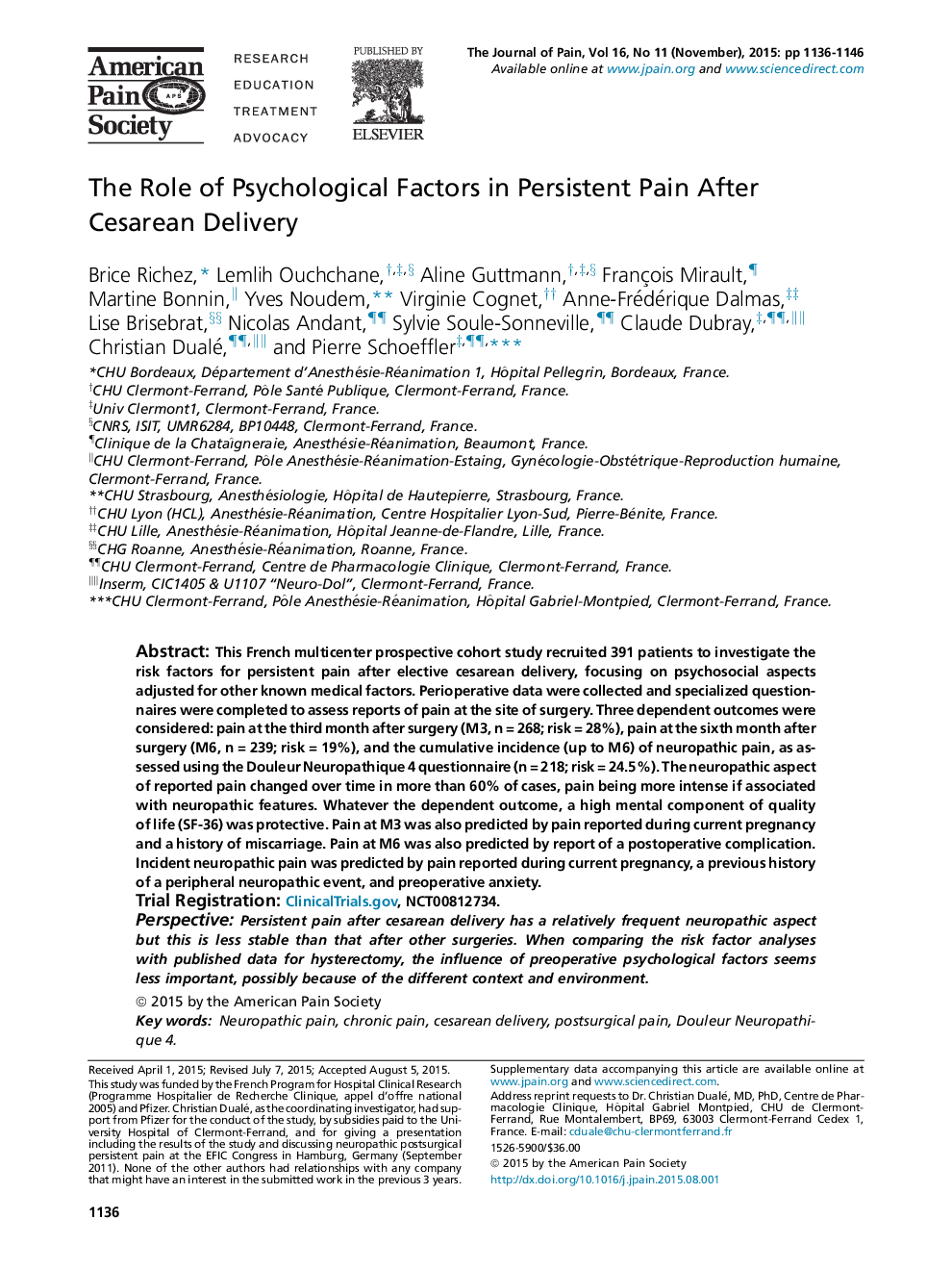| Article ID | Journal | Published Year | Pages | File Type |
|---|---|---|---|---|
| 2733562 | The Journal of Pain | 2015 | 11 Pages |
•391 patients scheduled for elective caesarean section underwent a 6-month follow-up.•A high preoperative mental quality-of-life generally protected from persistent pain.•Other risk factors were inconstantly identified, depending on the aspect of persistent pain.•The caesarean section model is less influenced by psychological factors, than hysterectomy.
This French multicenter prospective cohort study recruited 391 patients to investigate the risk factors for persistent pain after elective cesarean delivery, focusing on psychosocial aspects adjusted for other known medical factors. Perioperative data were collected and specialized questionnaires were completed to assess reports of pain at the site of surgery. Three dependent outcomes were considered: pain at the third month after surgery (M3, n = 268; risk = 28%), pain at the sixth month after surgery (M6, n = 239; risk = 19%), and the cumulative incidence (up to M6) of neuropathic pain, as assessed using the Douleur Neuropathique 4 questionnaire (n = 218; risk = 24.5%). The neuropathic aspect of reported pain changed over time in more than 60% of cases, pain being more intense if associated with neuropathic features. Whatever the dependent outcome, a high mental component of quality of life (SF-36) was protective. Pain at M3 was also predicted by pain reported during current pregnancy and a history of miscarriage. Pain at M6 was also predicted by report of a postoperative complication. Incident neuropathic pain was predicted by pain reported during current pregnancy, a previous history of a peripheral neuropathic event, and preoperative anxiety.Trial RegistrationClinicalTrials.gov, NCT00812734.PerspectivePersistent pain after cesarean delivery has a relatively frequent neuropathic aspect but this is less stable than that after other surgeries. When comparing the risk factor analyses with published data for hysterectomy, the influence of preoperative psychological factors seems less important, possibly because of the different context and environment.
